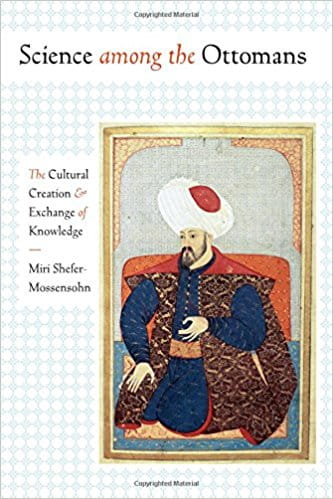
Science among the Ottomans: The Cultural Creation and Exchange of Knowledge
David W. Tschanz
Miri Shefer-Mossensohn
2015, University of Texas Press, 978-1-47730-359-7, $55 hb.
Historians have long argued that the Ottoman Empire failed to grow scientifically and technologically after the medieval Islamic Golden Age. Innovation was not encouraged, leading to stagnation. Miri Shefer-Mossensohn challenges this perception by comprehensively examining the role of science and learning in Ottoman culture. While not the most creative, the Ottomans were masters of adaptation, turning the inventions of others to their own needs and improving on them. By 1877, for example, they had built a transcontinental telegraph system that “brought a communications revolution throughout the empire,” and early in the 20th century they inaugurated the Hijaz Railway, which connected Damascus and Madinah. Absent, however, is a deeper examination of how Ottoman science came to focus more on importing and adapting technologies than on building the research framework to nurture a culture of innovation.
You may also be interested in...

Historic Mosques in Sub-Saharan Africa
From Mali to Tanzania, historian Stéphane Pradines traces a thousand years of Islamic architecture that forces us to rethink what we know about Africa’s past.
Archaeology and Geology of Ancient Egyptian Stones
Spanning three decades of fieldwork, Archaeology and Geology of Ancient Egyptian Stones is as vast as its subject: the stones ancient Egyptians used to shape their civilization.